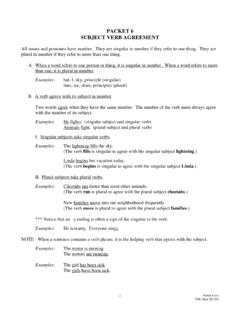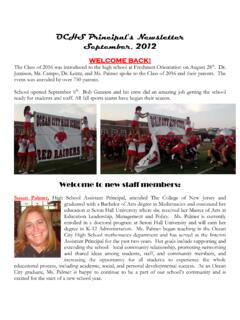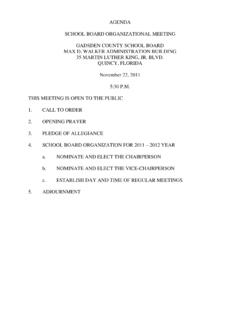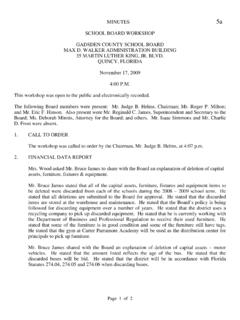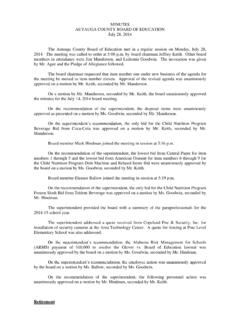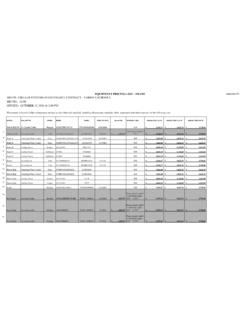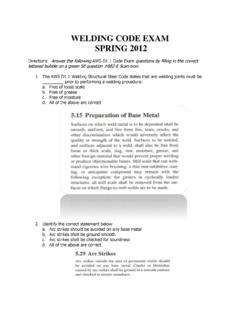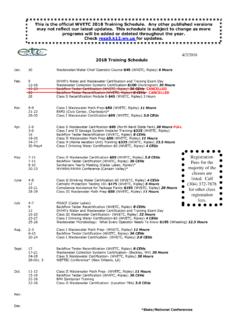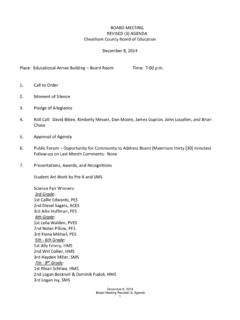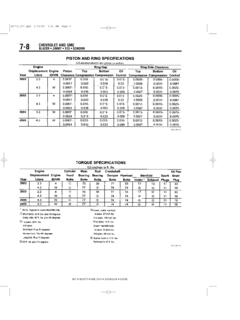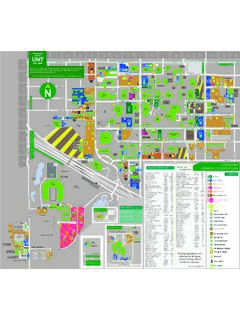Transcription of AP Biology Unit 5 Student Notes - PC\|MAC
1 Table of Contents Link unit 5 Molecular Genetics Student Notes Page 1 AP Biology unit 5 Student Notes Table of Contents Link unit 5 Molecular Genetics Student Notes Page 2 unit 5 Student Notes Table of Contents A. History of DNA Research Pages 3-8 B. Proteins or DNA: Which is the Genetic Molecule Page 3 C. DNA Structure Pages 8-9 D. DNA Replication Pages 10-14 E. Telomeres Pages 14-16 F. The Central Dogma of Genetics Page 16 G. Transcription Pages 17-20 H. RNA Processing Pages 20-21 I. Alternative Splicing Page 21 J. Types of RNA Pages 21-22 K.
2 Differences Between DNA and RNA Pages 23-24 L. Translation Pages 24-31 M. Genetic Code Table Page 25 N. Genetic Code Wheel Page 25 O. tRNA Page 26 P. Ribosomes Page 27 Q. Three Stages of Translation Pages 27-31 R. Wobble Effect Pages 30-31 S. Post-Translation Modification or Protein Folding Pages 31-32 T. Mutations and Genetic Disorders Pages 32-34 U. Chromosomes,Meiosis,and Reproduction Important Terms Pages 35-37 V. Types of Reproduction Pages 37-38 W. Types of Life Cycles Pages 38-39 X. Meiosis Pages 40-45 Y. Stages of Meiosis Pages 40-44 Z. Meiosis Summary Pages 44-45 AA. Gametogenesis Pages 45-47 BB. Mitosis and Meiosis Contrasted Page 47 Table of Contents Link unit 5 Molecular Genetics Student Notes Page 3 History of DNA Research Gregor Mendel (in 1866) Mendel, an Australian monk, worked with pea plants to discover the basic laws of inheritance.
3 Friedrich Miescher (in 1869) Miescher, while trying to isolate proteins from white blood cells, discovered a chemical which he called nuclein. Today, that chemical is known as DNA. Proteins or DNA: Which is the Genetic Molecule? For several years after Miescher s discovery, the importance of DNA was not understood. Most scientists believed that proteins served as the genetic molecules of cells. That made sense because scientists already understood that proteins were built from several kinds of amino acids (20). This, they thought, could explain the genetic diversity of life. DNA, on the other hand, was built from only 4 nitrogenous bases.
4 Scientists didn t think that DNA could code for the diversity of traits found across life. Experiments in the early 1900s eventually proved that DNA, not protein, was the genetic molecule. Frederick Griffith (in 1928) Griffith was a British Army doctor who was studying Pneumonia in the hopes of finding a cure. He is given credit for the transformation experiment, even though this was not his original intent. In the experiment, he took pathogenic (disease causing) bacteria and non-pathogenic bacteria and injected them into mice. The pathogenic bacteria killed the mice. The non-pathogenic did not. He then took some pathogenic bacteria and killed them by exposing them to heat.
5 He took the dead bacteria and injected them into more mice. The mice did not die. He then took some of the dead pathogenic bacteria and mixed them with living non-pathogenic bacteria. He then injected the mixture into mice. The mice died. His reasoning was some instructional agent was exchanged between the dead pathogenic bacteria and the living non-pathogenic bacteria allowing them to learn a new trick. The non-pathogenic bacteria were transformed from non-pathogenic into pathogenic bacteria. Griffith was never able to determine which molecule acted as the instructional agent that allowed the transformation to take place.
6 Oswald Avery and associates (in 1944) Avery and his associates repeated Griffith s experiments with the purpose of identifying what the instructional agent was that led to the transformation of the non-pathogenic bacteria. He was able to show that the transformation agent was DNA. The results of the experiment sparked lots of controversy, because most Table of Contents Link unit 5 Molecular Genetics Student Notes Page 4 scientists still thought that DNA was too simple to act as the genetic molecule and that proteins must play that role. The experiment did create some doubt and it inspired other researchers to more closely examine the issue.
7 Alfred Hershey and Martha Chase (in 1952) Hershey and Chase worked with the T2 Bacteriophage (a virus that infects bacteria) and E. Coli bacteria. They wanted to definitively identify if protein or DNA served as the genetic material. Bacteriophages were perfect for the task because they consist of only DNA and proteins. The researchers used radioactive Sulfur 35 to label the virus s outer protein coat or capsid. Proteins, because of the amino acid Cysteine, contain sulfur. DNA does not. Hershey and Chase were able to use the radioactivity to follow where the proteins went during the experiment. In a second experiment, they then used radioactive Phosphorus 32 to label the DNA inside the virus.
8 DNA contains phosphorus, while proteins do not. The radioactively labeled viruses were exposed to bacteria. The viruses infected the bacteria. In the radioactive Sulfur experiment, the radioactive sulfur did NOT enter the bacteria. When the viruses reproduced inside the bacteria, the new viruses that came out of the dead bacteria were NOT radioactive. In the radioactive Phosphorus experiment, the radioactive phosphorus did enter the bacteria. When the viruses reproduced inside the bacteria, the new viruses that came out of the dead bacteria WERE radioactive. The experiment showed that viruses attack bacteria by injecting their DNA, not their proteins, into the bacterial cells.
9 This proved to most scientists that DNA was the transformation agent and that DNA carries the information blueprint from one generation to the next. Table of Contents Link unit 5 Molecular Genetics Student Notes Page 5 Bacteriophage Hershey and Chase Experiment Transduction is the process by which a virus transfers genetic material from one bacterium to another. Viruses called bacteriophages are able to infect bacterial cells and use them as hosts to make more viruses. After multiplying, these viruses assemble and occasionally remove a portion of the host cell's bacterial DNA. Later, when one of these bacteriophages infects a new host cell, this piece of bacterial DNA may be incorporated into the genome of the new host.
10 Transduction is a type of horizontal gene transfer. Horizontal or lateral gene transfer is the movement of genetic material between unicellular and/or multicellular organisms other than by the ("vertical") transmission of DNA from parent to offspring. Transfer of genes through conjugation and transformation are also types of horizontal gene transfer. Table of Contents Link unit 5 Molecular Genetics Student Notes Page 6 Erwin Chargaff (in 1947) Chargaff developed what became known as Chargaff s Rules. Chargaff was able to show that A, T, C, and G are not found in equal quantities in a cell. He also showed that the amounts of each of the bases vary between individuals of different species, but not between individuals of the same species.
